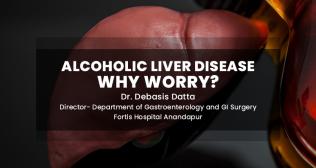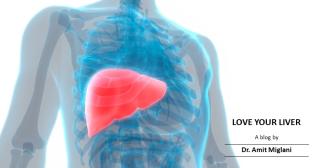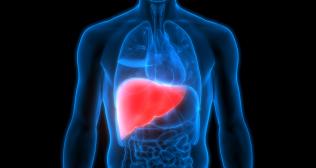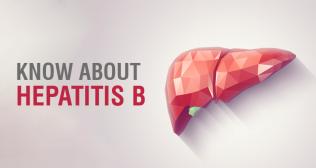
Abdominal Adhesions: Symptoms, Causes, and Treatment Options
Abdominal adhesions are fibrous bands of scar tissue that develop between abdominal organs or between organs and the inner abdominal wall. They form when the body’s natural healing process creates extra collagen after injury, inflammation, or surgery. While many adhesions remain symptomless, some tether intestines or organs, causing chronic discomfort, bowel obstructions, or fertility challenges. Understanding abdominal adhesions, recognizing early adhesions symptoms, and knowing when to seek intervention can preserve function and quality of life.
Laparoscopic and open procedures both carry risk, but awareness of adhesions post-surgery and emerging preventive measures can minimize complications. Timely diagnosis and tailored management empower patients and clinicians to address this adhesive disease effectively.
What Are Abdominal Adhesions?
The peritoneum; a smooth, slippery lining of the abdominal cavity; allows organs to glide freely. When this lining is disrupted by trauma, infection, or surgical manipulation, the healing response deposits excess collagen. These collagen strands bond surfaces that normally remain separate, forming abdominal adhesions.
Adhesions range from thin, filmy layers to thick, rope‑like bands. They may connect loops of the small intestine, fix bowel to the abdominal wall, or bind reproductive organs in women. In many individuals, these scar tissues remain silent and are discovered only incidentally during imaging or subsequent surgery. However, even asymptomatic adhesions can pose risks if they restrict movement of abdominal structures.
Abdominal Adhesions Causes and Risk Factors
Scar formation is a normal part of healing, but certain triggers amplify adhesion risk:
Surgical Procedures
Every incision, tissue handling, and cautery use during abdominal operations increases adhesion formation. Open surgeries typically provoke more adhesions than minimally invasive laparoscopic techniques.
Intra‑Abdominal Infections
Peritonitis, appendicitis, pelvic inflammatory disease, and diverticulitis inflame tissues, stimulating scar production and tethering surfaces.
Endometriosis
Ectopic uterine tissue implants in the pelvis provoke chronic inflammation. As lesions bleed and heal, they leave behind fibrous connections that may involve the ovaries, fallopian tubes, or uterus.
Radiation Therapy
Radiation for pelvic or abdominal cancers damages healthy cells and creates fibrosis that leads to adhesions.
Repeated Surgeries
Each subsequent abdominal operation adds a layer of scar tissue. Patients with multiple prior procedures face higher risk of complex, dense adhesions.
Genetic and Individual Healing Factors
Some people naturally produce more fibroblasts; the cells that synthesize collagen; making them more prone to adhesion formation despite similar surgical techniques.
Identifying these factors before a procedure allows surgeons to implement adhesion‑preventing strategies such as using anti‑adhesion barrier films or minimizing tissue trauma.
Recognizing Adhesions Symptoms and Diagnosis
Symptoms may emerge weeks, months, or even years after the initial triggering event. Common adhesive disease symptoms include:
- Chronic Abdominal Pain: A dull, persistent ache or intermittent sharp twinges. Pain often worsens after meals, with changes in posture, or during physical activity.
- Bowel Obstruction Signs: Cramping pain that comes in waves, bloating, nausea, vomiting, and inability to pass gas or stool suggest partial or complete obstruction caused by trapped intestinal loops.
- Fertility Challenges: In women, adhesions after surgery or from endometriosis can tether fallopian tubes, preventing egg capture and transport, resulting in infertility or ectopic pregnancy risk.
- Pelvic Pain and Dyspareunia: Scar tissue involving reproductive organs can cause deep pain during intercourse or menstrual cycles.
Diagnosing adhesions relies on a combination of history, physical exam, and imaging:
- Clinical History: Detailed surgical and medical history pinpoints previous procedures, infections, or radiation exposure.
- Ultrasound: While it cannot directly visualize adhesions, ultrasound detects secondary signs such as fluid collections or distended bowel loops.
- CT Scan with Contrast: CT highlights bowel obstruction and allows indirect inference of adhesion bands when loops appear kinked or fixed.
- MRI: Superior soft tissue contrast may suggest adhesive bands, especially in complex pelvic anatomy.
- Diagnostic Laparoscopy: The gold standard: a minimally invasive surgery where a camera directly visualizes and, if indicated, treats adhesions (adhesiolysis) in the same session.
Early identification of adhesions symptoms guides appropriate timing of intervention, reducing the risk of emergency surgery for obstruction.
Treatment & Management
Interventions for abdominal adhesions focus on alleviating symptoms, preventing complications, and restoring organ mobility:
Conservative Management
- Pain Control: Non-opioid analgesics (e.g., acetaminophen, NSAIDs) and adjuvant medications (e.g., low-dose tricyclics) help manage chronic discomfort while minimizing side effects.
- Dietary Modifications: Low‑residue or liquid diets reduce bowel workload, easing mild obstruction symptoms like bloating and cramping.
- Physical Therapy and Exercise: Gentle stretching, pelvic floor exercises, and targeted abdominal massage (by trained therapists) can sometimes break up superficial adhesions or reduce tension.
- Gut Motility Agents: Prokinetic drugs (e.g., metoclopramide) may aid in moving contents through partially obstructed segments.
Surgical Approaches
- Laparoscopic Adhesiolysis: Minimally invasive cutting of scar bands restores mobility with reduced risk of new adhesions compared to open surgery. It’s indicated for patients with recurrent obstruction or debilitating pain.
- Open Surgical Adhesiolysis: Reserved for extensive, dense adhesions not safely accessible laparoscopically, or when simultaneous bowel resection is required.
- Barrier Application: During surgery, placing absorbable barrier gels or membranes between tissues prevents re‑adhesion during healing.
- Segmental Bowel Resection: If an adhesion has caused irreversible damage or ischemia, removing the affected bowel portion may be necessary, with careful reattachment (anastomosis).
Emerging Therapies
- Anti‑fibrotic Drugs: Research into medications that inhibit fibroblast activity or collagen cross‑linking offers hope for reducing adhesion formation without surgery.
- Enzymatic Cleavage Agents: Experimental gels containing enzymes like hyaluronidase aim to selectively break down adhesive bands in situ.
Collaborating with a surgeon experienced in adhesion management and a multidisciplinary team ensures that each patient receives individualized care.
Prevention & Prognosis
Reducing the likelihood of problematic post‑operative adhesions begins in the operating theater:
- Minimize Tissue Trauma: Gentle handling, limited electrocautery, and avoiding desiccation of tissues during surgery decrease inflammatory triggers.
- Maintain Moisture: Frequent saline irrigation prevents drying of peritoneal surfaces, curbing collagen deposition.
- Use Adhesion Barriers: Applying specialized films or gels between tissues at the end of surgery provides a physical block while healing occurs.
- Favor Laparoscopy: Whenever feasible, choosing minimally invasive techniques reduces peritoneal exposure and adhesion risk compared to open approaches.
Long-term outlook depends on severity and location. Up to 20% of individuals develop symptomatic adhesions requiring treatment, and about 5% of patients with prior abdominal surgery experience at least one adhesive bowel obstruction. With attentive surgical care and early recognition of adhesions symptoms, many avoid emergency complications. Even when adhesiolysis is necessary, modern laparoscopy offers faster recovery and lower recurrence rates.
Frequently Asked Questions
Q1: How long after surgery can adhesions symptoms appear?
Ans. Symptoms may emerge weeks, months, or even years post-procedure. Scar tissue can mature slowly, and a once-silent adhesion may eventually cause pain or obstruction.
Q2: Can adhesions be prevented entirely?
Ans. No technique guarantees zero adhesions, but combining gentle surgical methods, barrier materials, and minimally invasive approaches drastically lowers risk.
Q3: Are there non-surgical ways to break adhesions?
Ans. Physical therapy, visceral mobilization techniques, and dietary measures may provide relief for mild cases but cannot reliably sever dense scar bands.
Q4: Do all adhesions require treatment?
Ans. No. If adhesions do not cause pain, obstruction, or fertility issues, they are often left alone and monitored.
Q5: Can adhesions reform after adhesiolysis?
Ans. Yes. Any surgical intervention carries some risk of new adhesion formation. Using barrier products and minimally invasive methods reduces but does not eliminate this risk.
Conclusion
Abdominal adhesions represent a complex interplay between healing and scar formation. By recognizing abdominal adhesions early; through awareness of adhesions post surgery and adhesions symptoms; and adopting evidence-based management and preventive strategies, patients and clinicians can navigate this adhesive disease successfully.
Discuss any persistent abdominal discomfort or signs of obstruction with your healthcare team to determine the optimal path for lasting relief and function.



















